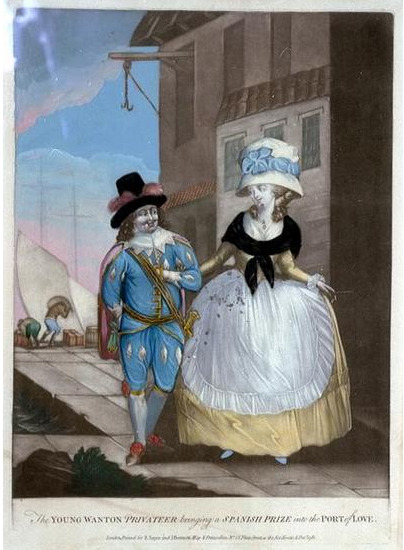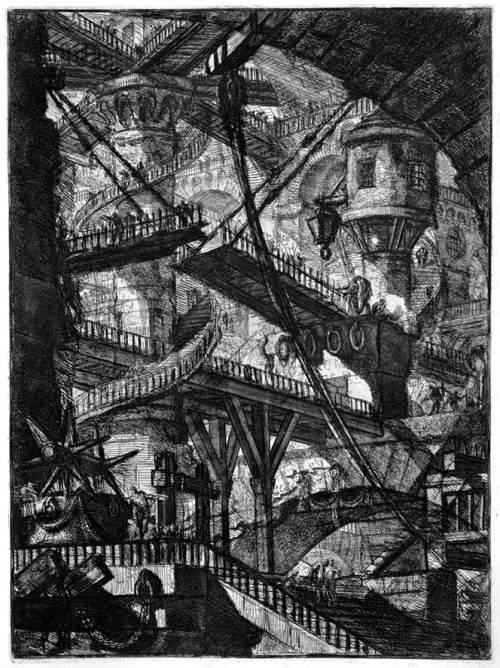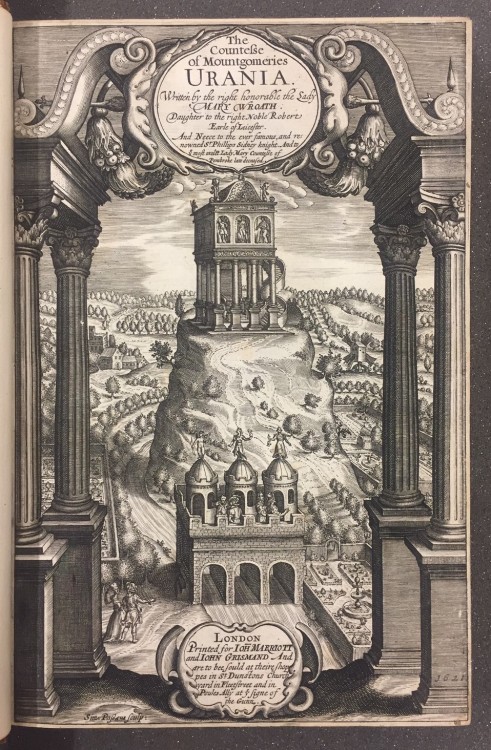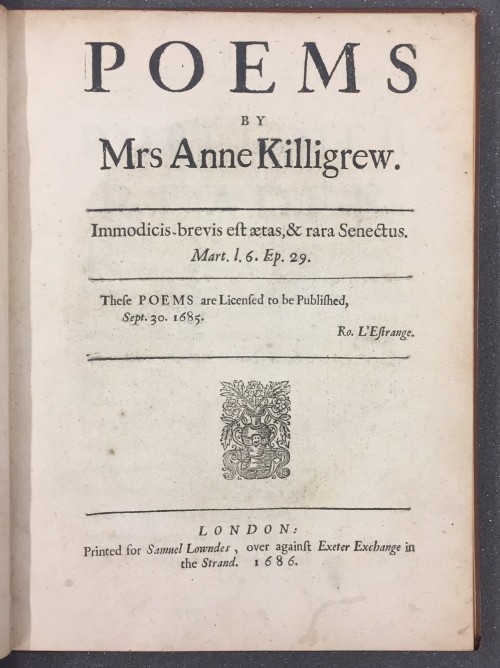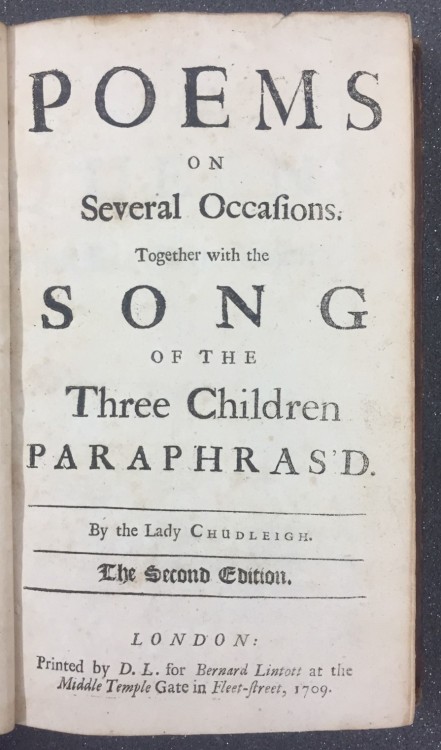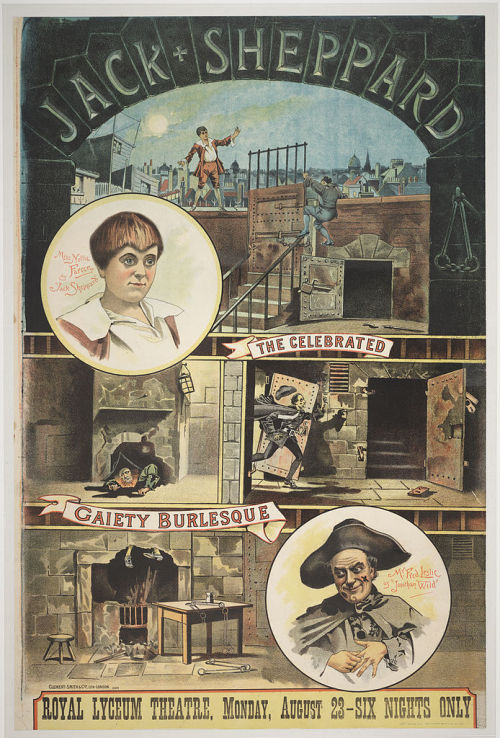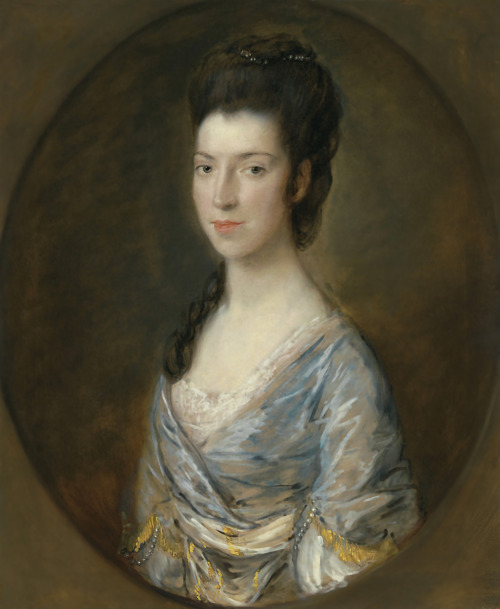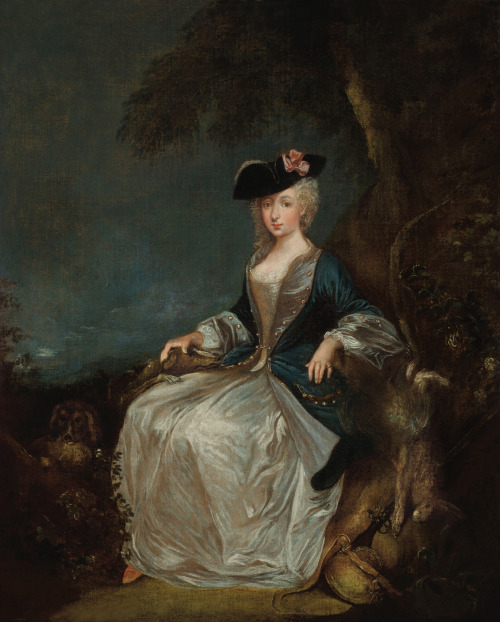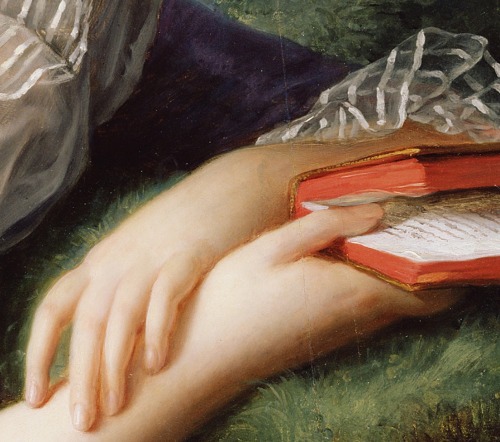#eighteenth century
C18th prints of prostitutes soliciting sailors in port.
Images from: http://www.portcities.org.uk/london/server/show/ConNarrative.141/chapterId/2932/The-welfare-of-seamen.html
Post link
George Stubbs, A Horse Frightened by Lightening, 1770, oil on canvas. Stubbs is beloved today for his anatomical accuracy and majestic depiction of horses. However, during the eighteenth century such paintings were low on the hierarchy and could not match the History Painting, a class drenched with emotion and drama, with deep roots in the worshipped renaissance and classical tradition . In many of Stubb’s paintings you can see him posing and freezing his creatures in a moment of tension or violence, almost mirroring the explosive mythical elements of a history painting. As well as this here we see him capturing the Sublime, by reflecting the awe inspiring and terrifying power of nature through the horse’s fight for survival.
Post link
Giovanni Battista Piranesi, Carceri d'Invenzione, 1749, etching and sulphur tint.
This etching is a part of a series of invented prisons, which include torture instruments, wandering lost prisoners and a surreal illusionistic depictions of architectural space. In such dramatic imaginative scenes as this it is not difficult to forget that Piranesi started his training as a theatrical stage designer.
Post link

(Washerwoman: painting (c1733-9) by Jean-Siméon Chardin at Toledo Museum of Art. Toledo, OH.)
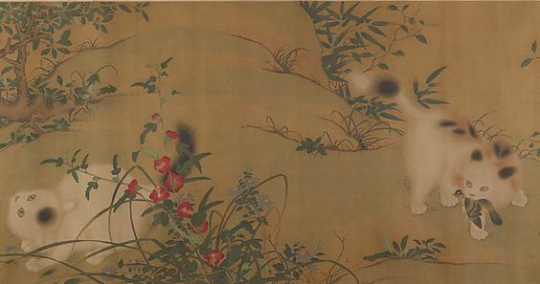
Spring Play in a Tang Garden Artist: Unidentified Artist Artist: Copy after Xuanzong (Chinese, born 1398, r. 1426–35) Period: Qing dynasty (1644–1911) Date: 18th century Culture: China Medium: Handscroll; ink and color on silk Dimensions: Image: 14 ¾ x 104 in. (37.5 x 264.2 cm) Classification: Paintings Credit Line: From the Collection of A. W. Bahr, Purchase, Fletcher Fund, 1947 Accession Number: 47.18.9 Metropolitan Museum of Art

Young Girl with a Cat (14,8 x 18,5 inches) pastel on parchment. At Paris, Musée du Louvre.
International Women’s Day
‘I am not covetous, but as ambitious as ever any of my sex was, is, or can be; which makes, that though I cannot be Henry the Fifth, or Charles the Second, yet I endeavour to be Margaret the First’.
~ Margaret Cavendish, Duchess of Newcastle-upon-Tyne
This week’s Turnbull Rare Books post marks International Women’s Day (8 March) by highlighting a selection of books written by women in the 17th and and early 18th century. Click the name links to read biographies of each author primarily through the Poetry Foundation website.
The authors and their works from the top are (in date order of publication) …
Lady Mary Wroth (1587–1653), poet
Urania.London: printed for John Marriott and John Grismand, 1621, Alexander Turnbull Library, qREng WROT Coun 1621.
Margaret Cavendish, Duchess of Newcastle-upon-Tyne (1623–1673), poet, philosopher, playwright, scientist and fiction writer
The philosophical and physical opinions. London: printed for J. Martin and J. Allestrye, 1655, Alexander Turnbull Library, qREng NEWC Phil 1655.
Aphra Behn (1640–1689), playwright, propagandist poet, translator, spy
The rover. Or, the banish’t cavaliers. London: printed for John Amery, 1677, Alexander Turnbull Library, REng BEHN Rover 1677.
Anne Killigrew (1660–1685), poet and painter
Poems by Mrs Anne Killigrew. London: printed for Samuel Lowndes, 1686, Alexander Turnbull Library, REng KILL Poems 1686.
Lady Mary Chudleigh (1656–1710), poet
Poems on several occasions. Together with the Song of the three children paraphras’d. London: printed by D. L. for Bernard Lintott, 1709, Alexander Turnbull Library, REng CHUD Poems 1709.
Anne Finch, Countess of Winchilsea (1661–1720), poet
Miscellany poems, on several occasions. London: printed for J. B., 1713, Alexander Turnbull Library, REng FINCH Misc 1713 copy 2.
Susanna Centlivre (bap. 1669–1723), actress and playwright
A bold stroke for a wife. A comedy. London: printed for T. Lowndes, T. Caslon., W. Nicoll, and S. Bladon, 1783, Alexander Turnbull Library, REng CENT Bold 1783.
Post link
A title too good not to share, complete with a former owner’s drawings of perhaps his or her own personal Blunderella.
Its verse, however, leaves a lot to be desired:
BlunderellaIdol of the Vain/ And first in the Loquacious Train/ In all things ignorant and weak/ Yet on all Subjects would she speak …
Part of a collection of 28 poems bound together in a single volume, the earliest being a copy of Charles Hardy’s Bacchanalia: or a description of a drunken club (1680).
Blunderellais book-ended by two anonymous poems: The Cambridge election. A new ballad (1729) and Female chastity, truth and sanctity: a satire (1734).
–
Henry Carey, Blunderella: or, the impertinent. A tale … London: printed for A. Dodd, 1730; Alexander Turnbull Library, fREng DARBY Bacc 1680.
Post link






Today i watched this unreal masterpiece for the second time. Cèline Sciamma’s Portrait Of a Lady On Fire paints(its a movie) a vivid at the same time gloomy nature of a tender lesbian relationship between two young french women in the eighteenth century. Every frame of the film feels like a painting. It starts off as a film about glances and stares and slowly(not in a negative sense) unfolds itself into a reverie of a cathartic experience. Sciamma focussed on the power of a female gaze. She dares to tell us a lesbian story through the eyes of the women living it. She also touches the taboo subject of abortion. This movie immerses us into oceanic hues, lush canvas close ups and mystery of love. Outside we hear blowing of the wind and rushing of waves which juxtaposes with the inner turmoil these women are facing. The transformation of their memoir into their marker is shown with a perfect emotional arc for both the characters. It is filled with unforgettable moments especially the last scene which is one of most powerful shot i have ever seen. Sciamma’s film is carefully structured with beatiful shots by Claire Mathon.
Hello. We’ve been writing this blog every day for a little over eleven and a half months now. As it was our intention to find out why every single day of the year is BRILLIANT, we’re almost there and it seemed appropriate to have some sort of countdown. If we make it, there will be eleven more posts after this one. Sorry it’s such a long one today, but it really is a great story. You can also find this blog on Wordpress, along with a short explanation of how it came about, and in which we reveal which of us has actually written all of this on the ’about’ page. Thank you all for reading, liking and re-posting. Will we reach a hundred followers my March 15th? Probably not…
Why March 4th is BRILLIANT
Through the Roof
Today we want to tell you about Jack Sheppard, who was born on this day in 1702 in Spitalfields, London. Jack was apprentice to a carpenter, but with only one year of apprenticeship left to serve, he took to a life of crime in 1723. Jack Sheppard was a thief, he was also a notorious gaol-breaker. He escaped from prison four times in 1724. We have to warn you that this story does not end well for Jack. He was eventually hanged at Tyburn.
If you’re wondering what a notorious criminal is doing featuring on ‘Why Today is Brilliant’, it is because his exploits made him something of a folk hero. He was young, good-looking, good natured, never violent and for a while it seemed as though no prison could hold him. We also need to explain a little about the political climate. In 1720, there had been a huge financial crash which is referred to as the South Sea Bubble. Loads of people had lost money and the economy was in ruins. When the whole thing was investigated, it was found that people were making money by selling debt. Politicians had taken huge bribes to allow this to happen. Politicians were disgraced and people were forced to pay back a percentage of their profits, but largely those who were rich to begin with suffered the least. If all this sounds horribly familiar to you, you’ll understand why people had little trust in those in authority and were happy to see someone get the better of them.
Jack really didn’t have an easy start in life. At the age of six he was apprenticed to a cane-chair maker, but his master died. He was sent to another who treated him badly and then, at ten, went to work for his mother’s employer, a draper called William Kneebone, who taught him to read and write and apprenticed him the a carpenter on Wych Street, near Drury Lane. By 1722, things were going better, he was showing a great deal of promise as a carpenter. Jack was small (only 5'4”) and slightly built with pale skin and very large dark eyes. He was quick to smile and had a ready wit. It made him popular in the taverns of Drury Lane and this was really where thing started to go wrong for him.
In a tavern called the Black Lion he met a highwayman called Joseph 'Blueskin’ Blake and a character called Jonathan Wild, a criminal who operated on both sides of the law. He also fell in love with drink and a woman called Elizabeth Lyon. His work suffered and he began to steal. First shoplifting and then taking things from the houses where he was working. He gave up his apprenticeship in August 1723 and progressed to burglary. He also moved in with Elizabeth who worked as a prostitute. When Elizabeth was arrested and imprisoned in a small gaol called St Giles Roundhouse, Jack actually broke into the prison and freed her.
In February 1724, he committed a burglary with Elizabeth and his brother Tom. Tom had already been caught stealing once and had been branded on the hand. When he was arrested for a second time, he was afraid he might be hanged and informed on his brother. A warrant was issued for Jack’s arrest. Jonathan Wild (who knew full well Jack was a burglar because one of his men had fenced some of his stolen goods for him) made sure his whereabouts was known and in April, Jack was arrested and imprisoned on the top floor of St Giles Roundhouse. Although he was wearing irons, within three hours he had broken through the timber ceiling of his cell, made a rope from his bedding, climbed out onto the roof and lowered himself to the ground. He had made quite a lot of noise smashing the ceiling and quite a crowd had gathered outside. Jack, still in irons, joined them. He shouted that he could see the escapee in the shadows on the roof then quietly slipped away.
In May he was caught in the act of pickpocketing and this time sent to St Ann’s Roundhouse in Soho. The next day, Elizabeth visited him. She was recognised, arrested and immediately locked up with him. They appeared before a magistrate and were sent to New Prison in Clerkenwell. Within days, they had filed through their manacles and removed a bar from the windows. They made a rope from their bedclothes and lowered themselves into the yard of the building next door. But the building next door was… another prison, Bridewell. Somehow they managed to climb over a twenty-two foot high gate and make good their escape. The event was highly publicised and was all the more remarkable because, as we told you, Jack was rather short and also Elizabeth was rather large.
Jack was becoming a pretty successful burglar and Jonathan Wild wanted to fence his goods for a share of the profits but Jack refused. Instead, he started to work with Joseph 'Blueskin’ Blake and together they burgled Jack’s former employer William Kneebone in July. Wild found out about it. He found Elizabeth and plied her with brandy until she gave away Jack’s whereabouts. He was arrested for a third time in Blueskin’s mother’s brandy shop by one of Wild’s henchmen. Jack was imprisoned at Newgate, tried, found guilty and sentenced to death. He escaped on the day his death warrant arrived. There was a barred window in his cell through which he was allowed to talk to visitors. He sawed through one of the bars. While he was being visited by Elizabeth and another woman, who had the delightful name of Poll Maggot, they distracted the guards while he removed the bar and climbed out. He escaped dressed in women’s clothes that the two had brought for him.
He evaded Wild’s men, but was arrested again in September by a posse from Newgate and returned to his condemned cell. By now Jack Sheppard was something of a folk hero. He was visited by the great, the good and the merely curious who wanted to take a look at the man who had escaped the law three times. His escape plans were thwarted twice after guards found files and other tools in his cell. Jack was moved to a strong room and put in leg irons that were attached by a chain to two massive staples in the floor. He demonstrated to his gaolers how this was not enough to hold him. He showed them how he could use a small nail to pick the padlock that held him. They bound him more tightly and also handcuffed him.
Meanwhile, his accomplice Blueskin was being tried in a court next door to the prison for the same crime. Although the evidence given by Wild did not correlate with the evidence he had given at Jack’s trial, Blueskin was convicted anyway. Blueskin was furious and attacked Wild in the courtroom. He slashed at his throat with a pocket knife and Wild was badly injured. There was a complete uproar which soon spread to the prison next door and lasted into the night. Jack Sheppard took advantage of this. He unlocked his handcuffs and removed the chains but couldn’t undo the leg irons. Even so, he still managed to climb up a chimney, but found his way blocked by an iron bar. He removed the bar, climbed back down and used it to break through the ceiling to an unoccupied cell above. From there, and still wearing the leg irons, he managed to break through another six barred doors and into the prison chapel. From here, he got out onto the roof which was sixty feet above the ground. He then went all the was back to his cell to fetch his blankets. He used them to lower himself onto the roof of the adjacent house, which belonged to a turner named William Bird. He broke into the house, walked down the stairs and out into the street. All without disturbing the occupants.
Jack hid out in a cowshed in Tottenham where he was spotted by the barn’s owner. But he managed to persuade him that he had escaped from a completely different prison to which he had been sent for failing to support a bastard son that he didn’t have. He bribed a shoemaker to fetch a blacksmith to free him from his leg irons and told them the same story. Daniel Defoe, the writer of Robinson Crusoe, who was then working as a journalist, got hold of the story and wrote an account of it. He describes how people at Newgate believed the the Devil himself had come to assist Jack in his escape.
Jack was arrested for the fifth and final time only two weeks later after he broke into a pawnbroker’s shop, stealing a black silk suit, a sword, jewellery, watches and a rather fine wig. He spent the rest of the day dressed as a dandy and swanning about town with two of his mistresses. When he was arrested, in the early hours of November 1st, he was blind drunk. This time he was put in a different cell in Newgate, where he could be watched at all times. He was also chained with 300 lbs of iron weights. Such was his fame that his gaolers charge high-society visitors four shillings each to see him. He remained cheerful with everyone and several people wrote to the King, George I, begging that his sentence be commuted to transportation. At his trial he was offered a reduced sentence if he agreed to inform on his accomplices, but he refused. He was sentenced to be hanged.
Jack Sheppard was taken to Tyburn on November 16th. He had planned one more escape, but the pocket knife he had intended to use to cut his ropes on the way to the gallows was found by a prison warder. His final journey seems to have been an oddly merry one. He was drawn in a cart along Holborn and Oxford Street accompanied by the city marshal. As many as two hundred thousand people turned out, to celebrate his life as much as anything. Just to give you an idea, this was around one third of the population of London at the time. The procession halted at the City of Oxford tavern on Oxford Street where he drank a pint of sack (sherry). His 'official’ autobiography, which was probably ghost written by Defoe, was on sale to the public. He handed a copy out as he mounted the scaffold. He was hoisted and hanged for the prescribed fifteen minutes and then cut down. Being of slight build, it is possible that he wasn’t dead at this point. His friends planned to take his body straight to a doctor in the hope that he could be revived. But the crowd pressed around him in an effort to stop his body being taken for dissection and, sadly, it may have been this that killed him rather than the hanging.
His story was quickly adapted for the stage and a play about him opened at Drury Lane only two weeks after his death. Four years later John Gay based his 'Beggars Opera’ on the story of Jack’s life. It was extremely popular and allowed Gay to recover the money he had lost in the South Sea Bubble. It was performed regularly over the next hundred years and used a century after that by Berholt Brecht and Kurt Weill as a basis for their Threepenny Opera.
Post link
Lady Charlotte Campbell, 1775 - 1861. Writer and famous beauty
Johann Wilhelm Tischbein (German, 1751 - 1829)about 1789
National Galleries of Scotland
Post link
ca. 1773 Lady by Thomas Gainsborough (Christie’s - 29Oct18 auction Lot 61). Blurred image to remove pervasive cracks w P'shop 3334X4059 @150 1.8Mj. The image was less blurred at eyes, eyelids, lips, pearls/beads, and gold trim.
Post link
1721 (before) Retour de Chasse - Portrait of Marie-Louise Sirois (1698-1725), full-length, with two dogs, a musket, hunting bag and game in a landscape by Antoine Watteau (Christie’s - 29Oct18 auction Lot 63). Removed spots & fixed edges w P'shop. 3268X4068 @150 4Mj.
Post link
Her thumb rests in her book, marking her place, as if she was interrupted while reading.
The painter, Élisabeth Louise Vigée Le Brun, adopted this gesture (often used in men’s portraits), to illustrate women’s importance in French Enlightenment circles.
The Vicomtesse de Vaudreuil, 1785, Élisabeth Louise Vigée Le Brun. J. Paul Getty Museum.
Post link
(viahttps://www.youtube.com/watch?v=KxoKrLgCvdU)
These are adult sized Panniers, perfect for Schuyler Sisters or even Marie Antoinette type cosplay. For children’s size pocket hoops, see my other YT tutorial. :)


